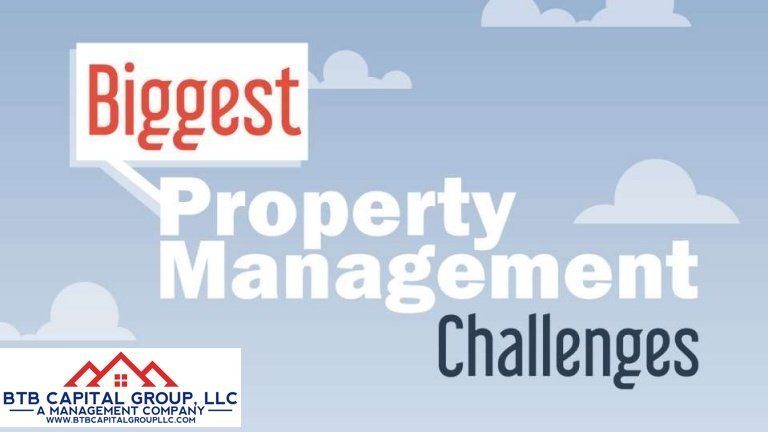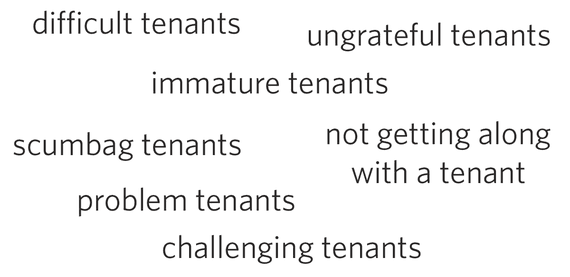Establishing A Successful "Power Team"
- By BTB Capital Group
- •
- 03 Oct, 2017
- •

Investors who have been in the real estate business for quite some time are familiar with power teams and often belong to one. A real estate power team is the assembly of a group of people who sell products or services to the same customer without taking business from each other. This group of individuals agreed to form a team that will work together and committed to bring referrals to each other. They are important when building a business empire because they are allies that protect each other from financial harm, quickly generate finances, and assist each other in achieving business goals.
More of their blog "HERE".

Did you know that 40% of real estate clients prefer to communicate by text...but only 15% of agents do so?
According to a report prepared by the California Association of REALTORS , the majority of real estate agents are not taking advantage of text messaging. Have you incorporated this into your process? If not, it’s time to give texting a try!
Read on to learn how to make texting an effective part of every step of your process, from lead follow-up and marketing to the client experience and your repeat/referral strategy.
Text Messaging for Real Estate: The Basics
Really quick, here are a couple of basics to understand about using text messaging for your real estate business:
First of all, you might hear texting referred to as SMS messaging. SMS stands for Short Message Service.
Second, the three tactics listed below involve sending automated text messages. That means you’ll need some sort of tech tool to execute these ideas. We suggest using a real estate CRM that includes SMS functionality (like O ffersPDQ ).
Now that we’ve covered those basics, let’s get to the good stuff.
3 Clever Text Messaging Tactics for Real Estate Agents
1) Create an auto-responder for online leads
One slightly alarming finding in the report by CAR is that 49% of buyers expect an instant response when they reach out to you. But what if a buyer is online at 2 AM searching for houses on your website and decides to fill out the form to shoot you an email? You’re not going to see it until the morning. Meanwhile, the buyer has found another property on someone else’s site, emailed that agent, and received a response just a few minutes later. BAM. You lost a potential client and future repeat business. All because you go to bed at 10 PM (which will now be followed by many sleepless nights).
Text messaging to the rescue! To respond to online leads instantly, you can set up a text message to send the moment an online lead clicks “submit” on your form. It should say something like, “Hi [name], thanks for your interest in the property at [address]! When could I give you a call?” (Those brackets signify merge fields , which allows you to auto-populate your message with the lead’s name and the property address.)
Text messages as auto-responders are smart because they have a much higher open rate than emails—in fact, 98% of text messages are opened! That’s hard to beat.
2) Send reminders/updates to clients
Text messages can be a great way to send important reminders to your current clients. In OffersPDQ, you can set up your workflows to send automated text messages to remind clients of any important dates you have entered into the system. One example is to set up an inspection reminder text message that will send two days prior to the inspection date.
Before you do this, however, you should ask the client how they would like to hear from you. While millennials may prefer texts, older generations might prefer email or even a phone call. In Realvolve, you can use tags to set the client’s preferred means of communication..
OffersPDQ User Tip:
To avoid any breach of your mobile phone plan, you will be issued a separate phone number from which you can send text messages through OffersPDQ. Because this number will be different than the number you use for phone calls with clients, it’s a good idea to give them a head’s up. In your introduction email to the client, include a sentence to the effect of, “You will receive important reminders and updates from me occasionally. They will come from this number: [number here]. Please save this number in your phone contacts.”
3) Stay in touch with past clients
Automated text messages can also be a great way to stay in touch after closing. Here are a few examples of text templates you might set up:
- Two weeks after close: How is everything going? Are you getting settled?
- One year after close: Can you believe it's been a year since you bought your home? Congrats!"
- On the client’s birthday: Happy Birthday, [name]!
Sometimes even the smallest touch can have a big impact. Incorporate text messages as one more touch in your repeat/referral strategy.
Should you implement a texting strategy?
There is certainly a right time and place for text messaging. Should you completely eliminate your warm-calling strategy ? No. Should you use texting for all of your leads and clients? No.
Texting isn’t a replacement for smart phone outreach or face-to-face interaction. And not everyone wants to communicate by text message.
But an automated text messaging strategy can be extremely effective for providing instant follow-up, staying top-of-mind, sending quick reminders, and even wishing past clients a happy birthday. So go ahead—add automated texting to your real estate process, and watch your business grow!

Tax reform. Tax reform. Tax reform .
The biggest issue facing housing and mortgage finance, by far, is tax reform. For now there is no consensus, or clear guidance, on what tax reform will entail.
In the middle of the night on Friday, the Senate passed a bill to completely overhaul the current tax system. Now, the House and the Senate will have to come to come to an agreement about which tax bill to send to the president's desk.
The House passed its tax reform bill back in the middle of November.
As a reminder, the Senate's version of the bill would keep the mortgage interest deduction intact, but would still double the standard deduction, making the MID less attractive, some experts claim. Catch up on how the Senate's bill would affect housing in our coverage here.
Odds are, Republicans will get something passed and as it looks now, the industry is firmly divided in half on whether or not this will be good for our line of work; but for vastly different reasons.
The Mortgage Bankers Association is in favor of one specific part of the reform — the addition of the so-called Rounds Amendment, which will help mortgage servicers avoid a rise in taxes.
David Stevens, CMB, President and CEO of the MBA, offered the following statement praising efforts by Senate Leadership to address this aspect:
“I want to personally thank Majority Leader McConnell, Chairman Hatch, Senator Rounds, Chairman Crapo, and Senator Perdue for working with us and commend them for their efforts on this important issue. Because of the Rounds Amendment, this package will protect the ability of most Americans to obtain safe, decent shelter and affordable home mortgage credit without disruption.”
“Had this language not been included, the change in tax accounting for MSRs would have had a devastating impact on the flow of capital that supports a robust and competitive real estate finance market, both single-and commercial/multifamily. We thank the Senate for its leadership on this issue.”
However, the lobbying giant for real estate agents, the National Association of Realtors, believes the reform puts home values at risk and dramatically undercuts the incentive to own a home.
According to a statement from NAR:
“The tax incentives to own a home are baked into the overall value of homes in every state and territory across the country. When those incentives are nullified in the way this bill provides, our estimates show that home values stand to fall by an average of more than 10 percent, and even greater in high-cost areas,” according to NAR President Elizabeth Mendenhall.
“Realtors support tax cuts when done in a fiscally responsible way; while there are some winners in this legislation, millions of middle-class homeowners would see very limited benefits, and many will even see a tax increase. In exchange for that, they’ll also see much or all of their home equity evaporate as $1.5 trillion is added to the national debt and piled onto the backs of their children and grandchildren.”
But the real issue is not just with the Senate version, but the House-passed version as well that sees bond financing for affordable housing significantly modified (in a bad way) if passed, as is.
According to coverage from Martin Braun in Bloomberg:
The House measure would eliminate a form of tax-exempt debt called private-activity bonds -- and, consequently, tax credits generated by the securities -- after Dec. 31, wiping out a key tool used to finance more than half of the affordable units built each year, according to the National Council of State Housing Agencies.
Braun notes that “the number of affordable rental units built nationwide over the next decade may be reduced by as much as 880,000, according to an estimate by Novogradac & Company, an accounting and consulting firm specializing in real estate.”
In a statement, Novogradac urges the House and Senate to retain the tax exemption of private activity bonds.
Black Knight Data & Analytics Executive Vice President Ben Graboske explained that, under the proposed tax reform, proposed changes to the standard deduction, mortgage interest deduction (MID) and capital gains exemptions in particular could put even more pressure on already limited available housing inventory, with ramifications for both current homeowners and prospective buyers.
“Both tax reform proposals double the standard tax deduction, which may, in many cases, provide a greater benefit to renters than to homeowners,” said Graboske. “It may also reduce the tax incentive to purchase a home and generally make the MID less valuable to borrowers. We’ve observed in the past that positive tax incentives can certainly impact home buying decisions – the Black Knight Home Price Indexes show clear evidence of this as a result of 2008’s first-time homebuyer tax credit."
However, limited data is available to examine the effects of removing an existing tax incentive on borrowers’ purchase behavior.
Graboske went one step further to say that a reduction of the MID could further constrain available housing inventory, which itself has helped to push home prices even higher in many places.
"Almost 3 million active first-lien mortgages -- current mortgage holders -- have original balances exceeding $500K -- the cap proposed in the House version of the tax bill. These borrowers would be exempt from the limit. We’ve already seen signs of ‘interest rate lock’ on the market, as homeowners with low interest rate mortgages have a disincentive to sell in a rising rate environment. The question now becomes whether the proposed tax reform adds another layer of ‘tax deduction lock’ on the market. Do these homeowners now also have a disincentive to sell their home in order to keep their current interest rate deduction of up to $1 million? If so, this would potentially add new supply constraints."
We’ll keep you posted for further developments.

The political jostling and frenetic lobbying on Capitol Hill over the Republican tax overhaul bill are producing unexpected developments that could prove important to homeowners, sellers and buyers.
The drafting of legislative language is a work in progress behind closed doors, but it appears that there have been some key changes in thinking since the White House and congressional Republicans released their “framework” for the tax bill Sept. 27.
One of the biggest shifts involves deductions of state and local taxes. Republican tax plans have called for a doubling of the standard deduction — to $12,000 for single filers and $24,000 for joint filers — paired with the elimination of a slew of popular write-offs, including the state and local taxes deduction.
The so-called SALT deduction is among the most widely used in the U.S. tax code, and it includes income taxes, general sales taxes and property taxes. Eliminating it would raise federal revenues by an estimated $1.3 trillion over the coming 10 years. Zeroing-out SALT has been a crucial element in the Republican tax framework, which badly needs revenue-raisers to counter deep losses caused by rate cuts for corporations and others.
Homeowners, especially in the high tax corridors of the Northeast; Washington, D.C.; Maryland; Virginia; parts of the Midwest; and California, are among SALT's heaviest users. Most of these areas have higher-than-average home prices and household incomes. They tend to vote Democratic but have some Republican representation in the House and Senate.
Those blue-state Republicans, in fact, have been a key force behind the rethinking on SALT. They know their constituents would be disproportionately affected by a total elimination of the SALT deduction, and they've lobbied House and Senate tax-writing committee leaders for relief. Among the possibilities:
- Allowing homeowners to write off property taxes, but not income or sales taxes.
- Giving homeowners the choice of either writing off state and local taxes or mortgage interest, but not both.
- Setting a household income ceiling for eligibility to take the SALT deduction.
It's not clear which, if any, of these might show up in a final legislative package, but the SALT issue is definitely in play. Any of these changes would lower revenues compared with completely eliminating SALT deductions. Limiting the deductions to property taxes but not income or sales taxes, for instance, would cost the government an estimated $300 billion over 10 years. But compromising on SALT would solidify political support for the tax plan among blue-state Republicans, whose votes could be essential to passage.
Another noteworthy area where there's been some rethinking: the mortgage interest deduction. Under the framework proposal, this popular benefit would be left untouched in the tax code. But doubling the standard deduction would mean that far fewer homeowners would choose to itemize and claim it. As a result, say critics, the deduction will be watered down as a financial spur to homebuying. The 1.2 million member National Association of Realtors has been outspoken in demanding that tax writers preserve the effectiveness of the deduction. But in recent weeks, other major housing groups, such as the National Association of Home Builders and the Mortgage Bankers Association, have expressed willingness to explore alternatives — and that has helped spark interest in creating a new form of subsidy: a mortgage tax credit, perhaps in conjunction with a substantial reduction in the current $1 million ceiling on deductions for mortgage interest.
Under the credit concept, borrowers might be able to subtract some percentage — say 10 or 15 percent — of interest payments off their federal tax bottom line, no matter what their income tax bracket. (Deductions, unlike credits, vary based on tax brackets; the higher your bracket, the bigger your deduction.)
J.P. Delmore, a top lobbyist for the home builders association, said his group is seeing “serious interest” in the credit idea. “There is a recognition that a properly crafted credit would provide a broad, meaningful tax incentive to millions of middle-class homeowners who do not itemize currently,” he said. In a speech last week, House Ways and Means Committee Chairman Kevin Brady, R-Texas, confirmed that he is open to re-examining the mortgage interest deduction, including ways to open it up to “all phases of homeownership.” A credit, which would be available to non-itemizers, would fit that description, say supporters of the idea.
Rental Income Subject to Self-Employment Tax - Big Loser # 1
We couldn’t believe it when we found this one short sentence on the 51st page of the bill “ (3) APPLICATION TO RENTAL INCOME.—Section 1402(a) is amended by striking paragraph (1).”
This was found in the section where the bill defines “net earnings from self-employment.” Let’s break this down.
The bill is amending IRC Section 1402(a) by removing paragraph one (aka IRC 1402(a)(1)). If you were to type “IRC 1402(a)” into a Google search, the first link will take you to the current definition of “net earnings from self-employment.” If you look at paragraph one (IRC 1402(a)(1)) as it’s currently written, you’ll see that the paragraph provides an exclusion of rental income from the calculation of self-employment income. This paragraph, which the bill proposes should be removed, saves you from paying Social Security and Medicare taxes, a total tax of 15.3%, on your net rental income.
So if paragraph one is removed as the bill proposes, your rental income may be subject to an additional 15.3% tax.
However, it’s not as simple as saying all rental income is subject to self-employment taxes. First, you’d actually have to show net positive taxable rental income in order for the self-employment taxes to apply. Assuming you do have net positive taxable rental income, you’d also have to be conducting a “trade or business.”
What type of landlords are running a “trade or business” is where it gets murky.
The IRC does not define “trade or business” anywhere in the tax code. Instead, we have to look to tax court cases to understand what “trade or business” means. To be engaged in a trade or business, the taxpayer must be involved in the activity with continuity and regularity and the taxpayer’s primary purpose for engaging in the activity must be for income or profit ( Commissioner v. Groetzinger, 480 U.S. 23 (1987)). Profit motive factors are defined in the IRC and there are other Tax Court cases we can look to in order to better define a trade or business.
Your rental income may be subject to self-employment taxes if you:
- Qualify as a real estate professional
- Materially participate in your rental activities
- Invest in short-term rentals
Holding rentals passively will not likely subject your rental income to self-employment tax. So if your rentals house long-term tenants and you have a day job (or business), you will likely avoid qualifying your rental income for self-employment taxes.
Regardless, should this one sentence go unnoticed and pass, it will have hugely negative implications for real estate investors.
Loss of Itemized Deductions - Biggest Loser # 2
What you will be able to write off as an itemized deduction on Schedule A will change drastically.
First, you will no longer be able to deduct state and local income taxes paid during the tax year. That tends to be one of the biggest itemized deductions for our clients in high-tax states. The elimination of state and local income taxes as itemized deductions will be costly for those in high-tax states. For folks in low-tax (or no-tax) states, the impact will be less noticeable.
Real estate property taxes are now capped at $10,000 on Schedule A. This will hurt people who own a primary residence or a second home of high value, or own in a locality with high property taxes.
Personal property taxes are no longer deductible.
Mortgage interest on new loans is now deductible only on the first $500,000. I have seen mass hysteria in the real estate investment community with this new limit. However, keep in mind that this limit applies to your primary residence and a second home. Your rental properties will not be subject to this limit as it’s written .
The Section 121 Exclusion is Harder to Claim - Biggest Loser # 3
Currently, the IRC Section 121 allows you to exclude $250,000 ($500,000 if married) of capital gains on the sale of your primary residence, as long as you’ve lived in the property for the past two out of five years. The new bill states that you must now live in your primary residence for the past five of eight years in order to qualify for the gain exclusion. The real bummer here is that there is no transition period as currently written in the bill. This means that any sale after January 1, 2018, must meet the new five-of-eight-years requirement.
So if you were planning to sell your primary residence and cash out the capital gains tax-free, you had better get moving on listing the property and hope that either (1) you sell before the end of the year or (2) this measure does not pass.
Elimination of Alternative Minimum Tax - Big Winner # 1
We jumped for joy when we found out that the Alternative Minimum Tax (AMT) was proposed to be eliminated with this bill. The AMT is an attempt by congress to make sure that rich Americans pay at least a 28% tax on all of their income. The problem is that the AMT negatively impacts the middle class, probably more so than it does the rich. Additionally, it can be insanely difficult to calculate, adding to processing time and professional fees incurred. Basically, it doesn’t serve its purpose and it’s inefficient and rightly being eliminated.
25% Entity Pass-Through Tax and 20% Corporate Tax - Big Winner # 2
Some LLCs and S corporations will now enjoy a 25% tax rate on their pass-through income. I say “some” because the calculation on the 25% pass-through rate is complicated, and businesses such as service businesses have been specifically excluded from qualifying for a 25% rate.
The calculation that was created leaves some S corporation owners out to dry. You will now use a “capital percentage” to calculate how much of your net income will be taxed at a 25% rate and how much will be taxed at rates above 25%. Businesses that are capital intensive, such as flippers, developers, and builders, may be able to justify high capital percentages. Otherwise, your capital percentage is 30%, meaning that only 30% of your net income from your business operations is subject to a 25% tax. The remaining 70% could be subject to your marginal tax rate if higher than 25%.
This is a huge bummer, especially considering C corporations now have a 20% tax rate. We are hoping that the calculation for the 25% tax on pass-through income will change as the bill moves through the senate.
Other Winners: 100% Bonus Depreciation and a $10 Million Threshold for Lifetime Gift Exclusion
Currently, the tax code allows for a 50% bonus depreciation on personal property purchases. So if you were to buy carpet that cost you $5,000, you could write off $2,500 today via the 50% bonus depreciation and then you’d depreciate the remaining $2,500 over a five year period.
With this new bill, you will be able to write off the entire amount of the personal property item as long as it has a useful life of less than 20 years.
Another win is the fact that you will now have a $10 million threshold for your lifetime gift exclusion amount. Previously, the amount was $5 million, which was adjusted for inflation giving us a $5.45 million in 2017. This means that each person can now give their heirs up to $10 million in wealth without being subject to taxes.
Conclusion
There are many changes in H.R.1 and we except to see push back from the senate. We’re not sure what will and will not pass, only time will tell. Our firm put together a public Google doc which you can find here. The link will not take you to our website, just to a document where we’ve compiled our detailed findings of this bill.
Where's this all headed? Republican leaders hope to pass their tax overhaul bill before the end of the year. That's optimistic. But keep this in mind: Whatever happens to the bill, there's a surprising willingness afoot to re-evaluate decades-old approaches to encouraging homeownership with tax benefits while simplifying the tax code.
As a property manager, your work is literally never ending. You have to keep your tenants happy but you also have to keep the real estate investors that own the properties that you manage happy as well. Depending on how many properties you handle, you could be dealing with dozens of accounts each day. Handling some of the obstacles that tend to come up can seem impossible. But it’s important that every “speed bump” be handled with caution and care or else that small speed bump could turn into an entire road block down the road if mishandled the first time around. Here are the biggest challenges for property managers and some ways to deal with them in the best ways:
Handling Resident Complaints
One of the biggest challenges for property managers is definitely dealing with resident complaints . You might have tenants that never make a peep; in general, the majority just pay their rent and you don’t hear from them otherwise. But there never fails to be a tenant (or several) who has complaints to add to your already mile-high workload. It is, however, your job to deal with them in a professional manner or you could end up losing the account.
First off, you need to make sure you document the complaint. Between all the things you do daily, you will likely forget about the complaint or let it fall by the wayside. Also, having the tenant submit something creates a process they must go through each time the need to complain; this will many times keep them from becoming serial complainers who bring up small issues that shouldn’t even be brought up in the first place.
Responsiveness is of utmost importance; don’t let a minor maintenance issue become the reason your client is getting calls or emails from tenants. Also important is investigation; it is your job to investigate the claims to ensure the legitimacy of the claim. Was there in fact a noise violation or is your complainer not aware of what constitutes a violation? Be sure everyone is clear as to what a noise violation is before either causing one or complaining about one.
Lastly, put your response in writing. Nothing will cover you better than documentation and it will give the tenant closure and a definitive answer. You should also give them a response either over the phone or in person; a written notice should be the last step. It is clear, handling resident complaints is one of the biggest challenges for property managers and you have to be prepared for it.
Conflict Resolution
Remember that speed bump we mentioned earlier? In some cases, it will indeed turn into an entire road block. As a property manager, dealing with conflicts is just inevitable. It is important to make things clear on all levels; in the rental or lease agreement, there should be clear definitions of what constitute violations and what due processes should be taken. Clear rules regarding pets are a definite must have.
If a conflict continues to persists after several attempts to resolve are made whether they be in person interactions, notices, emails or calls, and the problem looks like it may continue on into court, two options before resorting to this are arbitration and mediation. Seeking legal counsel from professional mediators can keep the conflict outside of the costly courtroom and help you resolve issues more smoothly. A good mediator helps the tenant and landlord or property manager reach a voluntary, mutually beneficial agreement. The mediator him or herself does not typically make the decisions in the case. An arbitrator refers the case to an impartial third person who will make the final decision on the case. If the case is submitted to the arbitrator, the two parties will be bound by that decision.
Filling Vacancies
Southern California doesn’t usually have to deal with a lack of renters or buyers, but lulls do happen, and when they do, you still have an obligation to keep your clients happy and it might becomes in one the biggest challenges for property managers. Here are incentives to consider that might be able to help fill them:Offering a 13th month of rent free if they sign a 12 month lease and are in compliance with regulations.
- Offering shorter leases like 6-month or 9-months.
- Offering/adding new appliances. Sometimes a refrigerator, a new dishwasher or an upgraded a stove or oven can be the dealbreaker for some renters.
- Consider pets. You can always dictate the restrictions and the pet deposit.
- Returning part of the security deposit after the first year after the annual inspection. List the annual inspection as part of the maintenance of the property.
Resident Retention
Retaining good tenants is one the biggest challenges for property managers if they begin to feel that there are better places for them to be or if they find out about perks other places are offering. Here are some ways you can make your quality tenants feel appreciated:
Around the holidays, consider giving tenants an annual gift like a gift card or certificate to a popular food store.
- Give residents rewards for following contributing, following rules or staying in touch. For example, a gift card for someone who pitched an idea that helped keep the laundry room cleaner or if someone helped put a green, eco-friendly system in place for the community.
- Consider keeping the rent the same for tenants that you’d like to retain instead of raising it; or at least offering them 3 to 6 months more than everyone else at the same price they were paying before, as a reward for being exemplary renters.

The real estate investing business isn't always what's its cracked up to be. We work with many real estate investors who work extremely hard procuring their residential properties by buying distressed often mistreated properties
and then transforming them into very nice rental properties. So dealing with difficult tenants, or at least, knowing how to handle difficult tenants, is just part and parcel of being a real estate investor.
Even if you had meticulously screened your tenant, sometimes when things in peoples lives change, people can respond in ways you do not expect.
Who is a difficult tenant? A troublesome tenant is someone who continues to be an issue for you. You may find yourself spending as much time dealing with this particular tenant as you do on all you other tenants combined. They take up your attention and sap your energy and make you feel as though you are working overtime always for the rent you get in return.
Every landlord needs to have a good action plan in place to identify and deal with problematic tenants. You may not have a bad tenant today but the longer you remain a landlord, the more likely you will encounter one someday. Renting residential property is a people business. Naturally, most issues do not have a clear cut solution. That said, this list of do's and don’ts will help you start working out your own response plan to difficult tenants.- Be Friendly But Firm When Working With A Tenant
Of course, you won’t lease many properties in the role of a cold and dictatorial property manager during the sales process. But after the leasing decision is made, it’s best to be very clear about what’s expected of the tenants in terms of on-time payments, keeping up the property, noise issues, guests, pets and other potential trouble spots.
This isn’t the time to be a buddy to the renter, or it won’t be long before you get that call for just “two more weeks on the rent” because of an unexpected dental bill, or learn the hard way that your renter is hosting concerts in the backyard and painting the walls lime green.
To be clear: issues of policy such as these do not have to interfere with friendliness. Good property managers make their tenants feel at home and are helpful and understanding. But too much solidarity with tenants often leads to their pushing the limits of the relationship. Be friendly and helpful, but firm.
Standing strong is a bit more awkward when the renter’s main contact is the same person who has to collect a late fee or make a demand. One strategy is to have the “enforcer” be a different person. But either way, firmness right upfront at the lease signing really pays off.
- Don't Fall Into The Trap Of Stereotyping A Bad Tenant
- Everything Must Be In Writing....Period!
- Don't Take It Personally....It's Business
- Use Certified Mail For Important Communications
- Prepare In Advance For Problems - Document
- If You Need An Attorney
If an eviction becomes necessary, try to avoid choosing an attorney at random. Start by asking people you know for names, particularly if they’re in the business. If nobody can give you a reference, call an attorney or two you know in other fields, and ask them if they know someone who specializes in the area of evictions.
You can vet the attorney with a few simple questions. Ask them whether they specialize in evictions, how many evictions they do a month, and how long it generally takes them to get one done. You can even ask them how long it would take to get a particular case in front of a judge; if they know off the top of their head, it means they’re on top of the Landlord Tenant Court schedule, which is a good sign.
No matter how tight a business you run, you’ll eventually deal with problem renters. But if you make things clear from the day renters move in, and stick to your guns, you’ll find life will be a lot easier for you. Above all, don’t fall into the trap of feeling guilty when you don’t give in to renters asking for special consideration. You’re running a business, not a charity. If a renter says they simply can’t come up with their rent or late fee for another two weeks, it’s a credit union, friend or family member who should be loaning them the money, not you. Remember: friendly, but firm.
- Learn From Your Experiences

U.S. home price growth picked up steam in September as strong demand continued to buoy the market.
The S&P/Case-Shiller 20-city index rose a seasonally adjusted 5.7% in the three-month period ending in September, compared with a year ago, the same rate of change as in August. The national index rose 5.8%, compared with a year ago, up from a 5.7% annual increase in August.
Nine cities had stronger annual price growth in September than in August, and western metros remained on top, with annual price gains ranging from 13.4% in Seattle to 7.7% in Dallas. Seattle prices are rising so rapidly that they have left No. 2 Portland in the dust, S&P Dow Jones Indices noted in a release.
| Metro | Monthly change | 12-month change |
| Atlanta | 0.6% | 5.3% |
| Boston | 0.7% | 6.2% |
| Charlotte | 0.8% | 6.0% |
| Chicago | 0.9% | 3.2% |
| Cleveland | 0.6% | 2.9% |
| Dallas | 0.8% | 7.7% |
| Denver | 0.8% | 7.6% |
| Detroit | 1.5% | 7.6% |
| Las Vegas | 1.0% | 7.3% |
| Los Angeles | 0.7% | 5.6% |
| Miami | 0.4% | 5.0% |
| Minneapolis | 1.0% | 5.7% |
| New York | 0.6% | 3.9% |
| Phoenix | 0.8% | 5.8% |
| Portland | 0.9% | 8.2% |
| San Diego | 0.9% | 7.1% |
| San Francisco | 0.7% | 6.1% |
| Seattle | 1.4% | 13.4% |
| Tampa | 0.5% | 6.9% |
| Washington | 0.7% | 3.1% |
The national price index reclaimed its 2006 peak last fall, but the closely watched 20-city index is still about 2.9% shy of that bubble-era peak.
Earlier in August, data provider CoreLogic released its own home price index, which showed prices rose 6.7% for the 12 months ending June. In contrast, the Case-Shiller index is a three-month rolling average of prices.

As economic growth has picked up across the country, several regions have experienced particularly sharp job gains in recent months. Some are places that have lured major employers, or are home to several fast-growing industries. Others are regions that suffered severe job losses during the recession and are now recovering.
Governing compiled the latest federal jobs data for all metro areas with workforces of at least 100,000. For each region, monthly employment averages over the first four months of 2017 were compared with those for the same period last year. In all, 33 of the 236 metro areas recorded year-over-year increases exceeding 3 percent.
Here are some of the places that experienced top job growth rates over the past year:
Boise, Idaho
The Boise, Idaho, region has seen its employment base expand 4 percent over only the past 12 months, the largest increase of any metro area reviewed.
The region’s economy is fairly diversified, with no single industry accounting for a large portion of employment. Education and health services jobs are up 5.4 percent for the year, while construction employment similarly remains strong. Public-sector employment, a particularly important component of the economy given the presence of the state capitol, is also up 4.1 percent over the year.
Several startups and expanding tech firms have been opening their doors in downtown Boise recently. In nearby Caldwell, a food-processing equipment company last spring began construction on a new manufacturing facility. Other companies are relocating from elsewhere, including an engine parts manufacturer that relocated to the region from Simi Valley, Calif., last year.
Orlando-Kissimmee-Sanford, Fla.
Orlando’s economy has emerged as one of the nation’s fastest-growing among larger regions. Monthly average job totals are up by nearly 46,000 this year, an increase of 3.8 percent.
Tourism has led Florida out of the recession and continues to remain strong, says Christopher McCarty, director of the University of Florida's Bureau of Economic and Business Research. The sector’s growth has been especially key to Orlando’s growth given the area’s theme parks and other tourist destinations. Local leisure and hospitality jobs have climbed 5.4 percent over the year.
An influx of retirees migrating to the region has boosted other segments of the economy as well. The latest Labor Department estimates indicate the region’s construction employment is up 8.6 for the year as the housing market continues to recover.
Other industries recording notable gains in recent months include financial activities and the trade, transportation and utilities sector.
Gainesville, Fla.
The Gainesville, Fla., region’s economy has seen employment increase by 3.8 percent over the year.
The University of Florida and the large medical center have driven much of the job gains. Government, education and health collectively account for about half the region’s total employment, so local leaders have looked to other sectors for growth. McCarty says there’s a focus on supporting a startup community near the university. “There’s somewhat of a realization that to really move forward a lot, the university really needs to have a community with enough employment to attract people to stay there,” he says.
Other regional industries, while still relatively small, have shown signs of growth in recent months. Professional and business services, along with the trade, transportation, and utilities industry, both expanded more than 6 percent over the year.
Nashville, Tenn.
Nashville’s economic boom doesn’t appear to have slowed. The region’s employment is up 3.8 percent over the first four months of the year, with all major industries registering increases.
Recent job gains are closely tied to the strong population growth that’s occurred for several years. Census data suggest much of the recent growth is most apparent in the suburban communities surrounding Nashville where new homes are being built. Accordingly, employment in the construction industry (which includes mining and logging), is up 12 percent over the year.
Another sector most responsible for the recent growth is education and health services, which has expanded by 4.6 percent over the year.
Dallas-Fort Worth-Arlington, Texas
Economic growth throughout many parts of Texas slowed in recent years, largely as a result of falling oil prices. But the Dallas region is still booming, continuing to add jobs at a rapid pace. Total employment over the first four months of the year soared 3.5 percent from the same period in 2016.
Laila Assanie, an economist with the Federal Reserve Bank of Dallas, says the region’s economy closely mirrors the national economy, which has acted as a tailwind in supporting local development. “The secret behind Dallas’ recent boom is a diversified industrial base, which provides opportunities for a variety of skill sets,” she says.
The big drivers in the Dallas area have been the business and financial services sectors. Multiple insurance companies have consolidated operations locally, for instance. Assanie says that the area’s central location, low cost of living and favorable business climate make it attractive for corporate relocations or expansions.
Much of the recent job creation has taken place around the suburban cities north of Dallas, which include Frisco, McKinney and Plano. Toyota just opened its massive new North American headquarters in Plano, expected to eventually employ 4,000 workers.
By comparison, the economy of Fort Worth and the western part of the metroplex is more tied to oil and gas. Although it’s still adding jobs, its annual growth rate was less than half that of neighboring Dallas last year, according to the Federal Reserve Bank of Dallas.
Ocala, Fla.
A number of factors have propelled steady job gains in the north central Florida region of Marion County.
For one, the region has welcomed more retirees recently. That’s helped support the local health-care sector, as it has in other parts of the state.
Manufacturing has also started making a comeback as firms retool and expand, says Rusty Skinner, who heads CareerSource Citrus Levy Marion, a regional workforce development group. The local economy sustained severe losses during the recession, with construction and homebuilding-related manufacturing incurring especially sharp declines. Total employment, while still below pre-recession levels, has since accelerated.
One major selling point the region enjoys is its central location along a major interstate, making it an ideal location for distribution centers. FedEx opened a new facility last year, followed by an announcement that auto parts retailer AutoZone would construct its own new facility nearby.
Relatively small Marion County can’t offer all the amenities of the state’s big cities. So officials have taken a targeted approach in seeking employers who are a good fit for the advantages it does have. “The challenge we face is really honing in on those [companies] that will maximize themselves with our assets,” Skinner says.
Reno, Nev.
The focal point for job growth in the Reno region has been the Tahoe Reno Industrial Center, which occupies 107,000 acres in the northern Nevada desert and has become home to a growing number of employers in recent years. Tesla Motor Co., the region's biggest economic development prize, continues to hire more workers as its ramps up operations at a battery manufacturing plant there. Earlier this year, Google purchased more than 1,200 acres of land with plans to build a data center. Numerous other tech firms, including Amazon and Apple, also maintain a presence.
Mark Pingle, a University of Nevada, Reno, economics professor, says that the region represents an attractive option for companies planning to expand or relocate from neighboring California with lower real estate costs, lower taxes and less regulation. “Company after company is locating there now,” Pingle says. “They have it so dialed in that it’s very easy for a company to buy some land, build their facility and be operating.”
Part of the region's growth, though, is simply making up for the steep job losses it suffered in the recession. Only in the past few months has total employment surpassed pre-recession levels.
Las Vegas-Henderson-Paradise, Nev.
The Las Vegas economy ground to a halt during the recession. But the region has regained its momentum and has experienced some of the nation's top job growth numbers in recent months.
Part of that, of course, has to do with rebounding revenues in the gaming industry. As the national economy has improved, tourism spending is up, which means a boost for Vegas' casinos, hotels and related businesses.
But other industries within the region are growing even faster. Employment in the construction industry, hit hard by the collapse of the housing bubble, has jumped an impressive 16 percent in just the past 12 months. Financial activities and professional and business services employment also both climbed 4.6 percent.
Part of the Las Vegas economic growth also stems from continued longer-term population gains as more people migrate to the region. “Las Vegas has reached the population density now where they can start self-sustaining industries to supply Las Vegas,” Pingle says.
Ogden-Clearfield, Utah
The Ogden, Utah, metro area is another region that’s experienced strong job growth for a number of years. Steady job increases have persisted since 2010, with the latest monthly averages up 3.3 percent over last year.
The region maintains a diverse economy, and the latest job estimates suggest nearly every major industry has expanded over the past 12 months. Businesses recently moving into the area include Northrop Grumman and e-commerce website Wayfair.
One of Ogden’s hottest sectors is aerospace and advanced materials, a cluster that's currently supported by 17 area employers.
What does this all mean?
When you consider investing in real estate, "Jobs Growth" is one of the most important factors to consider. Your real estate investments should reflect areas of healthy job growth.
Stay tuned, we will continue to show you how to use these factors and how they should be part of your calculus when you do plan to invest in real estate.

We're property managers who've been in business for many years and we've seen the real estate market go up and down and all the way around. Our goal is to provide timely and informative actionable ideas that you can utilize in your real estate business.
We want to be your go to source for the latest real estate information that may pertain to property management, real estate investing, home improvements, tenant screening, etc.. Most real estate blogs fail because its owners don’t put fresh, relevant content on their sites on a regular basis. Then they give up too quickly when they don’t get instant results. It is much like old-school farming, which only works with prolonged effort and consistency.
Our Aim Is To Provide Fresh Relevant Real Estate Related Information!
